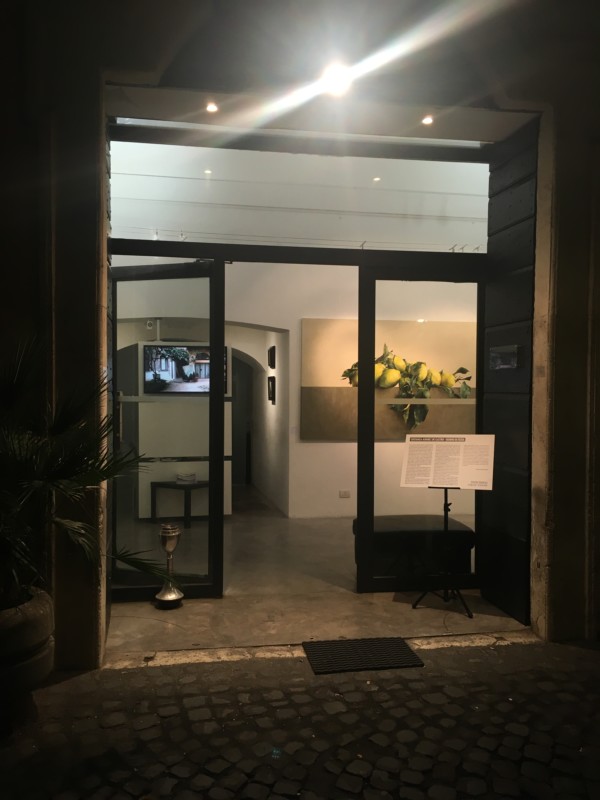Day of Celebration
Dec 12, 2017 - Feb 9, 2018
curated by Christina Underhill Danielli
With a learning experience dedicated to refined decorative techniques in the recent past, followed by an internship as a decorator of theatrical sets, Costanza Alvarez de Castro approaches easel painting from a diametrically opposite perspective: the quasi-absence of background. Whether a portrait, a fruit, or an animal representation, the background is simply neutral: not aseptically neutral, nor symbolically neutral, and not even historically neutral, like the ‘gloomy’ backgrounds characteristic for Caravaggio whose realistic interpretations Costanza approaches with a modern spirit. The background of Costanza’s paintings wraps, seizes, encases, supports, and keeps the represented subjects alive, raising them to the level of contemporary icons, deconstructing them from any environmental situation to enhance their vital, pulsating aspects.
Those who know the history of art may be tempted to associate the style of some of her paintings with a specific chronological or stylistic environment: the sixteenth-century Flemish or Lombard still life, neoclassical or early-twentieth-century portraiture, contemporary metaphysics. However, her subjects emerge outside these environments, while remaining in some way tied to them.
She keeps the oil painting technique from her bond with the antique expertly adapting it through a continuous search for effects. The choice to paint with oil is not a foregone conclusion. The material of this technique is complex in its processing, made of overlapping layers, glazes, slow drying times, and different application methods that allow shades, the play of opacity and sharpness to which the contemporary eye is almost no longer used; complexity to which the artist wisely gifts new possibilities, using an antique technique in a contemporary key, while respecting, with ability and humility, its slow and complex processes.
Her subjects are simultaneously abstract and realistic, immortalized in a timeless environment without real space, yet very tangible in their physicality and the specifics of every detail: the brightness of a pomegranate, the expression of a face, the softness of a hare’s fur. Details that are not easy to do with oil, especially if you want to understand this technique while moving away from examples of the past. Her portraits seize a fresh, immediate, and timeless aspect of their subjects, even when people wear contemporary clothes. Fruits and animals are represented in an almost hyper-realistic way, but without the photographic effect that distinguishes those kinds of works.
The recent series of paintings entitled Rainforests takes a completely different direction: on these canvases prevails the background that acts as scenography and a subject at the same time. It is not easy to combine these two terms in a work that represents at the same time a moment that is dear to the artist, therefore the subject, and a naturalistic landscape, therefore in some way a natural setting. These paintings are imagined as works in which the physical subjects of the previous paintings are hazy in the middle of nature or even absent, and the way the landscape is represented illustrates not only a naturalist subject but also a particular “piece” of the soul of the artist, denoting a voluntary choice to blend and at the same time turn the background into the new subject.
The high quality of Costanza’s paintings lies in knowing how to combine the thorough subtlety of the details with the solidity of her figures, executed with a pasty and, at the same time, transparent and clear material, an indication of a refined technique that is always searching for new solutions.
Christina Underhill Danielli
(Translation by Jelena Cerović)








